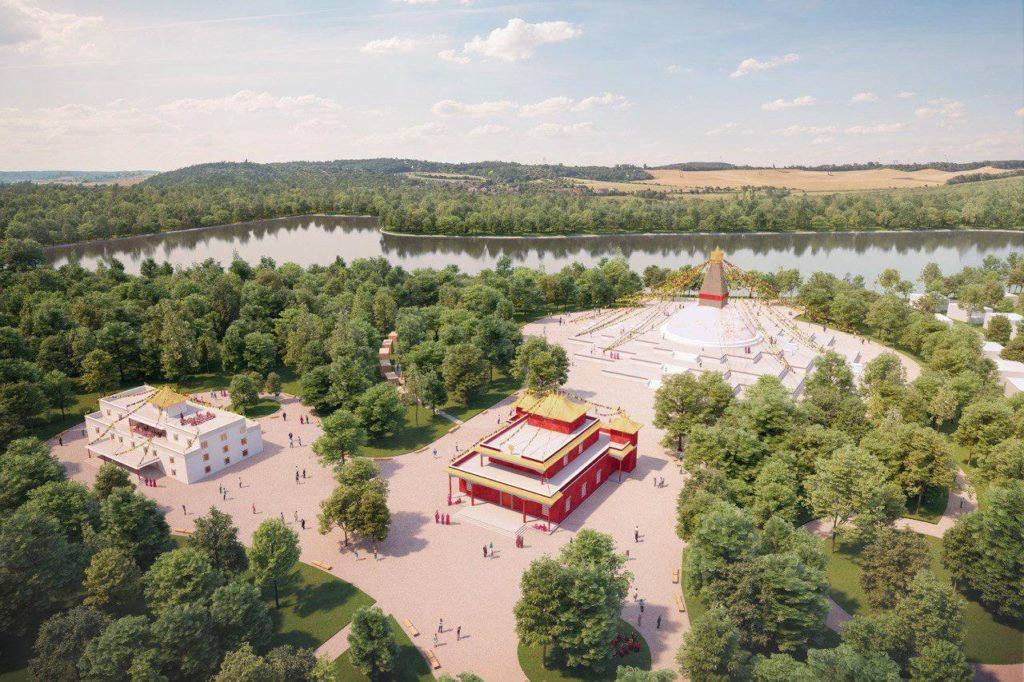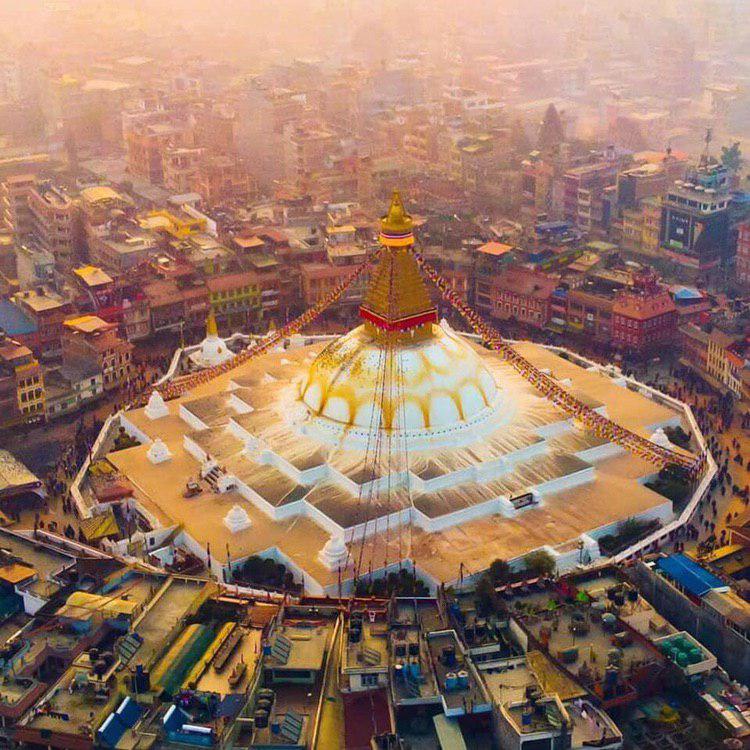Stupa in Czech Republic
An Extraordinary Stupa in Czech Republic
H.H. Tsori Rinpoche will personally supervise in Czech republic building of a unique Buddhist monument called in sanskrit stupa. Our goal is construct and consecrate a stupa comparable in size and shape to world-wide known stupa of Boudhanath in Kathmandu, Nepal.

History of erecting stupas
The stupas were initially built as shines for bodily remains of Buddha Shakyamuni since around 2.500 years ago. After his passing his remains were distributed into eight great stupas in eight countries. Seven of them were few centuries later reopened by king Ashoka (268-232 BCE), a great Buddhist benefactor who wanted to redistribute the holy remnants and bring thus Buddha’s blessing to more countries of his empire. According to tradition Ashoka erected 84.000 stupas to hold the remains and next to many of those we can still today find the famous Ashoka stone pillars with in-scripted messages.
With the diffusion of Buddhist into Tibet and other parts of the world the stupas started to be erected all over Asia. Their design changed but the meaning remained the same — to enable the sentient beings to have access to the blessing of Buddha and his advanced followers. Tibetan lamas, who had to study the art of building and properly filling stupas for years, have erected hundreds of thousands of these monuments all over Tibet. And with many of them forced to leave Tibet facing the Chinese occupation, we can enjoy these days seeing the Tibetan style stupas all over the whole world.
The symbolism and benefit of the stupas
The traditional Buddhist teachings say that stupas bring immense benefit to those who build them and who encounter them. The stupas are as well said to have immeasurable positive influence on their surroundings, nature and the elements. They symbolically represent a wide range of Buddha’s teachings such as the ten virtuous actions, three jewels, six perfections, four immeasurables, five types of powers, the eight-fold noble path etc. The proportions of a stupa represent the five elements and the details of the outer design symbolises eight of the twelve main deeds of the historical Buddha of our times. Thus it is said that the stupas have the power of bestowing liberation through seeing (Tib. མཐོང་གྲོལ་ [thong dröl])–through a mere sight of the stupa we can recognise the nature of phenomena, given our mind is ready and open. In the same way the wind which touches a stupa is explained to bring harmony to its immediate surroundings and to inspire beings to compassionate action.
In several of his discourses with disciples Buddha Shakyamuni has taught that by building stupas beings can accumulate immense amount of merit. Thanks to this merit we will not only be meeting with the liberating teachings of the Buddha in next lives but also will be endowed with long life, healthy and attractive body, pleasant voice and further excellent signs.

